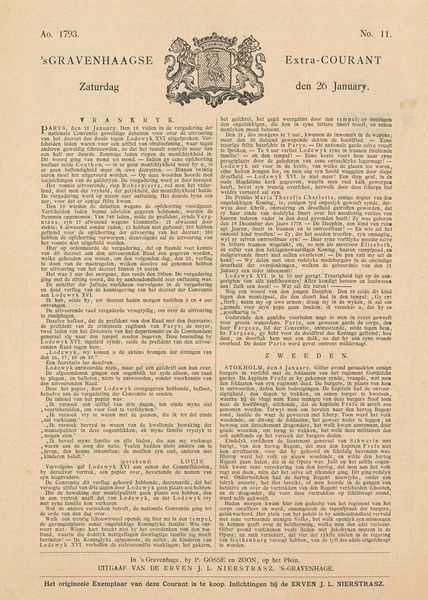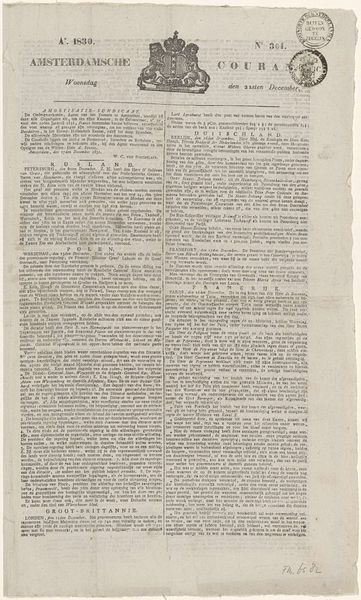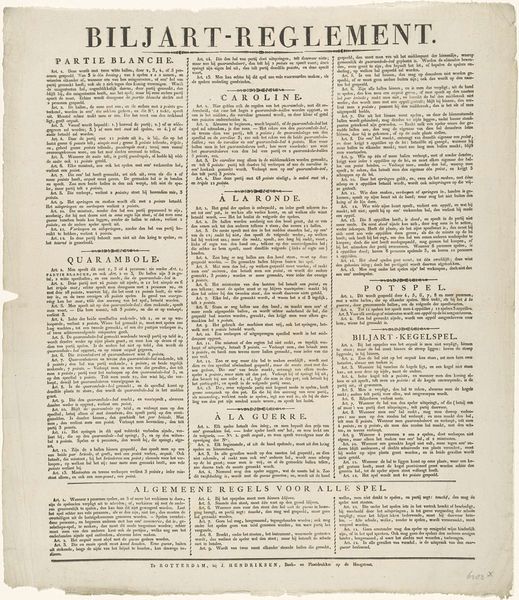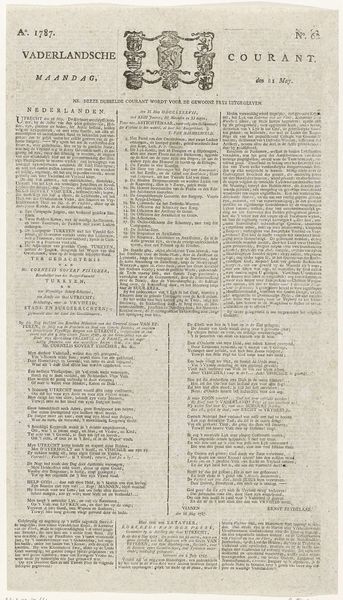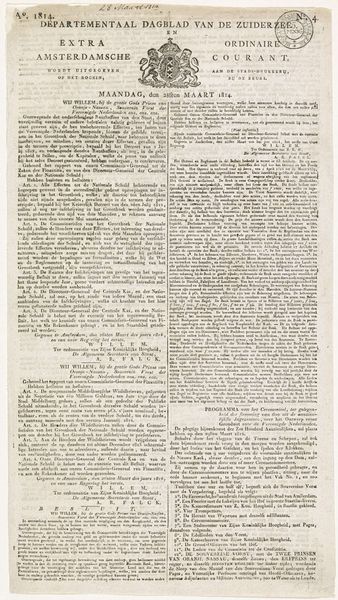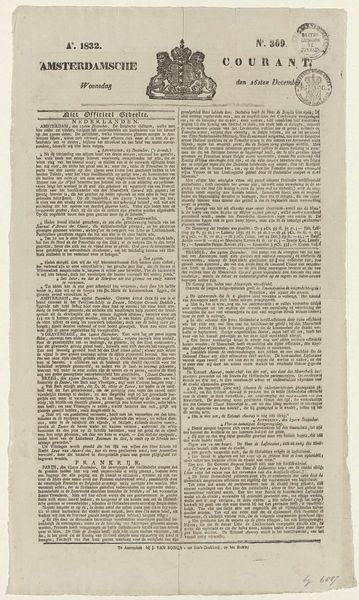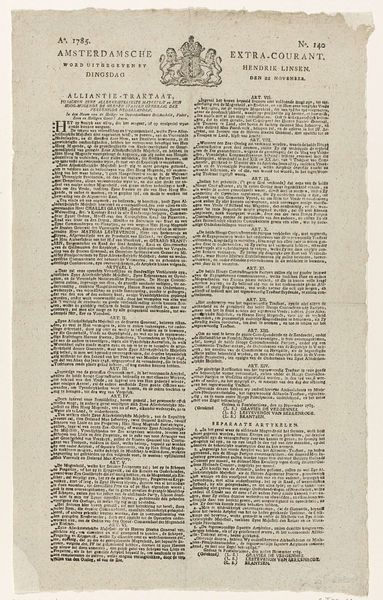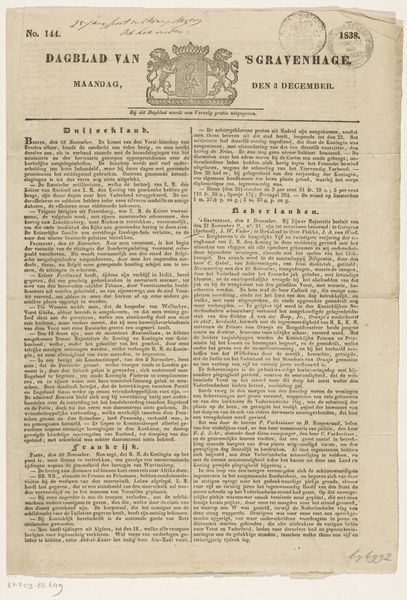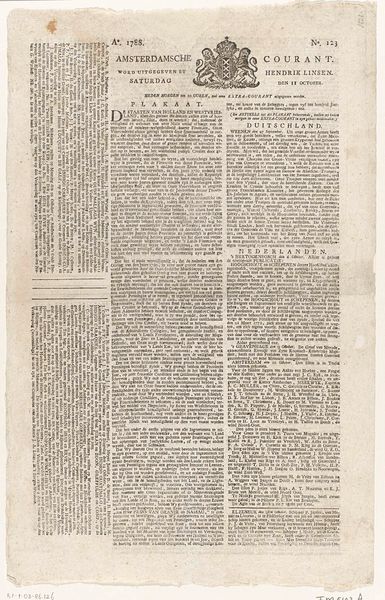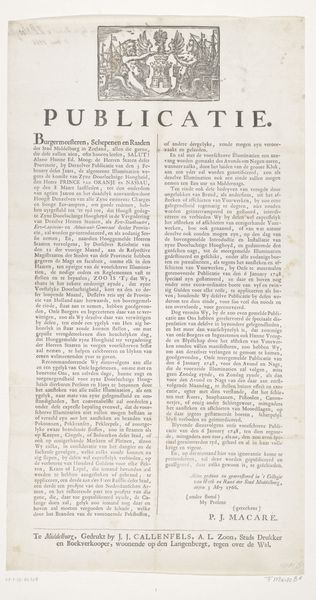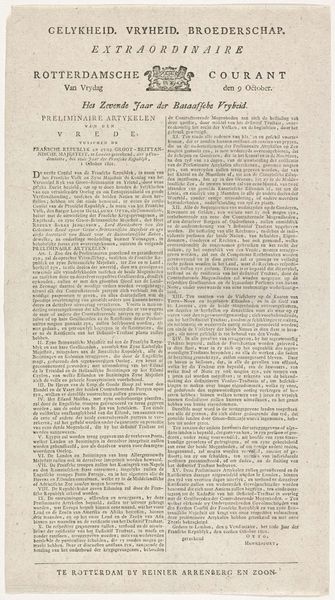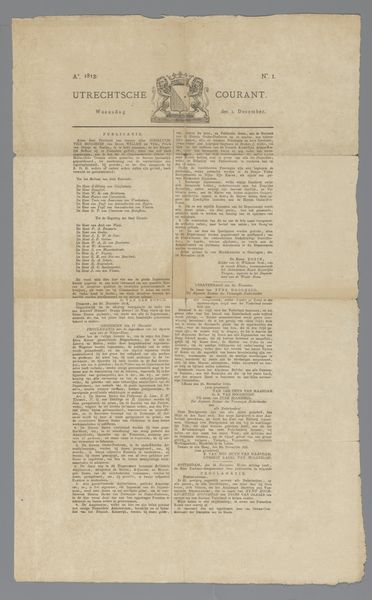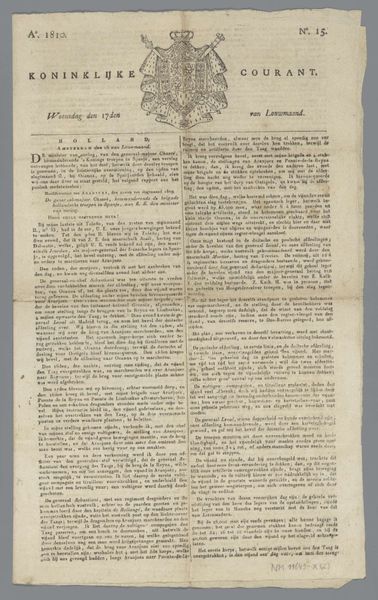
Proclamatie van de provisionele representanten van het volk van Amsterdam, 1795 Possibly 1795
0:00
0:00
gerritbrenderabrandis
Rijksmuseum
print, textile, paper, typography
# print
#
landscape
#
textile
#
paper
#
typography
#
history-painting
Dimensions: height 525 mm, width 435 mm
Copyright: Rijks Museum: Open Domain
Editor: Here we have "Proclamatie van de provisionele representanten van het volk van Amsterdam, 1795", a print, presumably from 1795, currently housed in the Rijksmuseum. It's dominated by dense typography, almost resembling a textile pattern. It gives off a very formal and historical mood, as expected. What aspects of this declaration stand out to you? Curator: What I see is an artifact deeply embedded in the revolutionary fervor of the late 18th century. Amsterdam, like many other European cities, was grappling with the ideals of liberty, equality, and fraternity. Note how the text is presented bilingually – Dutch and French. What does that suggest to you about the intended audience and the political climate? Editor: It seems they were trying to reach as broad an audience as possible, including those influenced by the French Revolution. Was Amsterdam experiencing similar social upheaval at the time? Curator: Precisely! The Dutch Republic was in a period of immense political and social transformation. This proclamation, as a printed document, becomes a powerful tool for disseminating revolutionary ideas and consolidating support for the new provisional government. Consider the role of print culture in shaping public opinion during this period. Did publications like this shape perception? Editor: So, it wasn’t just about informing people, but also about shaping their beliefs and rallying them to a cause. And, the reference to Amsterdam suggests that it has specific relevance to Amsterdam and possibly its status? Curator: Yes. Also consider the language used and how the promises of equality and freedom resonate in a society marked by deep social and economic inequalities. Whose voices are amplified by this proclamation, and whose are perhaps still excluded? What does history suggest? Editor: That's fascinating. I never considered how a simple printed document could be such a complex reflection of the socio-political landscape. Thinking about who is included, excluded, and who published it gives me a richer appreciation of the context. Thanks! Curator: Indeed. By looking at this proclamation, we can understand not just the stated ideals, but the social and political struggles of Amsterdam at that moment in history, reminding us how artifacts carry layers of stories worth investigating.
Comments
No comments
Be the first to comment and join the conversation on the ultimate creative platform.
